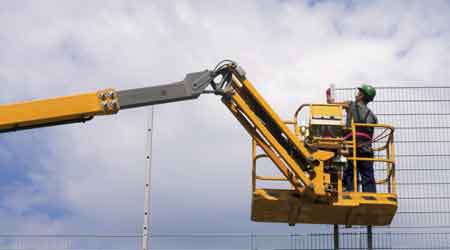OSHA: Falls Top List of Aerial Work Platform Incidents
Part two of a 3-part article on aerial work platform safety
Nearly 85 percent of aerial lift accidents occur during operation, according to the Occupational Safety and Health Administration (OSHA). The accidents break down like this: electrocution, 30 percent; falls due to tip-overs, 23 percent; falls from platforms, 20 percent; and hit or crushed in or by a lift, 12 percent. The remaining accident causes are maintenance-related — 10 percent — or tied to other causes, such as injuries when climbing on and off the lift, 5 percent.
Training is the best defense against accidents and injuries. The proper use and adjustment of PPE might seem like an obvious remedy, but there are right ways and wrong ways to use them. One example is the fatal fall from a lift platform by a technician wearing fall protection. Because the harness was too long, the technician’s fall momentum swung him back and forth with great velocity under the platform, where he hit his head repeatedly on the underside of the platform, causing severe trauma. Training by certified instructors spotlight these important points about proper use of safety equipment and safe practices and help workers avoid accidents.
Reading the lift manufacturer’s operation and maintenance manuals is the responsibility of operators and technicians, while the owner’s responsibility is to provide training by qualified and certified trainers upon delivery of a sale, rental or lease lift.
Managers also can consider third-party training. Online OSHA/ANSI-compliant training courses include downloadable operator certification cards that show proof that the employee took the course and passed the tests. Courses are equipment specific, so a technician might require multiple courses to operate several types of equipment, such as boom lifts and scissor lifts. Examples of course content provided by third-party sources are: an explanation of types of lifts; selection of the most appropriate lift; inspections; safety procedures; fall protection; and shutdown procedures.
Third-party trainers often provide: raining kits, DVDs, OSHA publications, lift-safety posters, CD-ROMs, and free OSHA information and resources, as well as first-aid kits, signs, and PPE. Kits generally contain everything needed for departments to provide their own lift training.
Related Topics:












